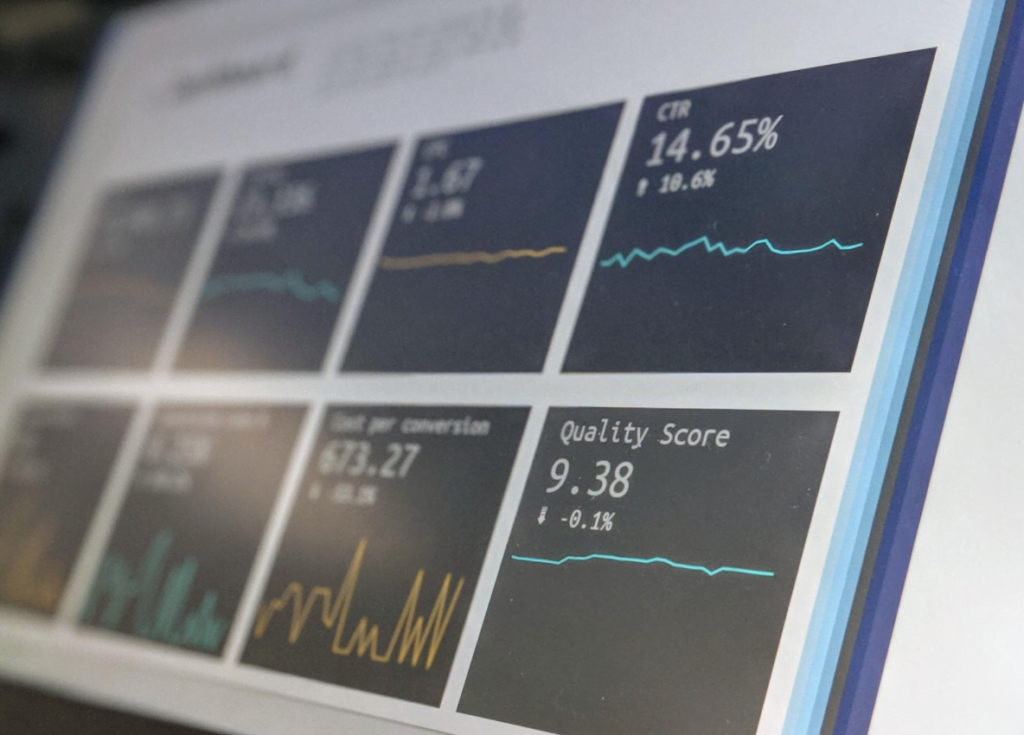When you’re working to build your portfolio, develop financial plans, and navigate asset allocation, it often makes sense to work with an advisor, especially if you’re new to investing. A financial advisor can help you curate your investment portfolio and make more effective asset allocation decisions. However, you also must be aware of advisory fees, management fees, and other expenses that financial advisors and advisor firms collect. Often, working with a human advisor isn’t as immediately affordable. This creates a bit of a quandary: What can you do if you want to build your investment strategy, but you don’t want to pay the comparatively higher management fees that an investment advisor often charges?
In these scenarios, many investors forego human advisors for a new type of advisor: the robo-advisor. Robo-advisors are also known as automated advisors, and they’re typically low-fee investment manager alternatives that offer users a reasonably hands-off investment approach. Mainly when you compare a robo-advisor’s lower fees against the expense required for a human financial advisor, it’s clear why many younger investors, beginners, and even investing pros depend on robo-advisors. Brands like Fidelity, Charles Schwab (Schwab Intelligent Portfolios), TD Ameritrade, SigFig, and others provide robo services.
While they can’t always match the financial advice you can get from a traditional financial advisor, robo-advisors regularly promise a self-managed personal capital service that can help you reach your investing goals. To learn more about today’s top robo-advisors, how they help your portfolio, and even robo-advisor risk tolerance, here’s what you need to know.
How do robo-advisors work?

Though the robo-advisor definition might seem quite self-explanatory for many finance professionals, these tools commonly depend on advanced technology. Robo-advisors, automated advisors, and other robo-tools depend on algorithms and software applications to help you manage your personal capital and make quicker investment decisions. Though a robo-advisor won’t always dispense investment advice, its automated features, algorithms, and technology integrations empower investors with flexible, hands-off investment opportunities.
Typically, many robo-advisor services don’t require human interaction. However, depending on your financial goals and your chosen investing account, some robo-advisors enable you to connect with portfolio managers and financial planners to answer basic questions and provide advisory services. Whether you’re wondering about the S&P index, AUM, or backend benchmarking, a support advisor may be able to help. A product like Acorns and Wealthfront helps you benchmark asset class allocation, track backend performance, and get quick snapshots of your expense ratio. For U.S. investors, this is incredibly beneficial. Though these added preferences may lead to different annual fee assessments, they’re helpful resources to have.
Unlike other traditional portfolio services, robo-advisors typically require lower minimum investments, and some even don’t carry account minimums. Robo-advisors often provide automatic rebalancing services and can help you optimize your tax portfolio, take closer looks at individual stocks, and check how your assets are performing. Since you don’t have to factor in account minimums, annual fees, or other broker expenses, it makes it easier to start managing your portfolio quickly. This is mainly for new investors who want to get a fast start on their investment process and individuals who wish to find lower-cost investing services to help mitigate past performance or a more complicated financial situation.
Between TD Ameritrade, Schwab Intelligent Portfolios, S&P, SigFig, and other affiliates reaching for the top spot, it’s never been easier for millennials, young adults, and retirees to start using robo-advise tools for tremendous financial success.
What are the pros of robo-advisors?
Of course, even the best robo-advisor has its pros and cons compared to a traditional advisor. Suppose you’re trying to build an aggressive portfolio or encourage a higher annual return, for instance. In that case, you might need long-term investment solutions that can provide more hands-on tools for your portfolio. However, before you pick out a taxable account platform or start emptying your savings account into diversification options, it’s essential to know how popular robo-advisors excel and when you might need to work with a human advisor who has experience working with client assets.
For starters, robo-advisor tools offer high-quality portfolios. While these aren’t necessarily aggressive portfolios—most robo tools focus on index-based ETFs—recent years have shown that low-cost index funds give you a strong chance of outperforming many other investment preferences. Plus, ETFs and similar funds have relatively few downsides and aren’t subject to as much market volatility, though there are no guarantees. When you’re choosing your first robo-advisor or investing in financial products for capital gains, you’re often choosing a platform that adheres to research collected in the last year and beyond. When a financial advisory service or robo tool empowers you with investing well, it can help you improve your average return and mitigate higher fees.
Robo tools and digital services also boast greater ease of use and convenience than many in-person advisor services. Since many of these are digital products that you can access on the go, all you need is an internet account, a recurring contribution (which differs from a monthly fee), and a connected device. For example, your robo-advisor account will likely provide you with an online questionnaire to connect you to the proper robo-advisor portfolios and financial planning services. This questionnaire can help gauge what digital advice would best benefit you, whether you’re trying to learn more about equity, asset classes, or modern portfolio theory while still offering a hands-off approach to investing.
Commonly, portfolio management services want to know more about your risk tolerance, your cash account goals, and how involved you want to be in your long-run financial health. Then, your investment products can develop a normalized benchmark and put you in portfolios that meet your risk level, fee structure needs, and financial goals.
Robo-advisor brands like SoFi, Betterment, and Vanguard regularly offer lower fees, no minimum account size, and no annual advisory fee. Typically, these platforms also charge fees as a percentage of your account balance. Your chosen brokerage or robo-advisor platform usually sweeps this fee from your balance and prorates the charge for a given time period. SoFi’s automated investing is often preferred over traditional human advisors because you seldom have to focus on investment minimums.
Financial services and digital advisor tools help you invest in low-cost ETFs while maintaining low account minimums and helping alert you to important information on a daily basis if you so choose. However, that’s not all you should know about robo-advisors and how even famous names like SoFi, Betterment, and Vanguard can impact account holders and determine how much money you can make in average returns.
What are the cons of robo-advisors?

While there are plenty of reasons to start with a robo-advisor or similar financial technology, there are a few downsides as well. Although you can often waive the annual management fee, the largest robo-advisors like Betterment and Wealthfront can’t necessarily offer higher returns and better service than other investment choices promise. Though an automated investing platform may work to pay certain dividends, the disadvantages mean that you should also consider the competition when you’re looking into financial automation tools and robo-advisors. After all, while it might feel good to set your investing goals on autopilot, there are times when you’ll need a human touch.
Though artificial intelligence, machine learning, and other technologies make it easier for robo-advisors to choose growth stocks, mutual funds, and other investment products based on historical data, intelligent portfolios are but one piece of the puzzle. An essential component of portfolio allocation stems from your unique financial situation, your long-term goals, and your family’s needs. A good advisor, broker-dealer, or financial planner should work alongside new clients to review past investment performance, view individual retirement accounts (IRAs) and other retirement plans, and help new investors get the best returns for their risk profile.
A human advisor can also explain retirement account investment risk and similar security concerns. While robo-advisor returns can sometimes compare to those offered by a live advisor, robo-advisor performance doesn’t always scale the same way. Though there are similarities between services, an excellent financial advisor can still provide tailored solutions to diverse demographics than current technology allows. Though digital products offer discounts, can provide robo reports to keep you apprised of your credit score, and help prevent financial conflicts of interest, they can only robo-advise you so much. Compared to a live investment advisor, these robo-advisor limitations seem restricting for many prospective investors.
Is it worth it to use a robo-advisor?
While no one brochure can perfectly spell out how a robo-advisor can impact your financial performance, there are a few reasons why you might want to consider one. For many investors, robo-advisor services are excellent choices because they’re typically high-quality investment products, carry low minimum balances and robo-advisor fees, and offer solid average returns. Since robo-tools also have a lower risk level, it’s easier to establish a normalized benchmark, connect your platform to your chosen financial institution, and start investing quickly.
Whether you’re devoting a percentage of each paycheck or you’re setting up weekly deposits, the main reason people turn to platforms like Wealthfront, Fidelity, SoFi, and others, is because they’re convenient, easy to use, and can help you reach a solid annual return. With robo-advisory services, you can start investing within minutes and build your portfolio for a stronger financial future. It’s easier than ever to invest since there are plenty of industry options, trusted platforms, and low-fee robo-products.





